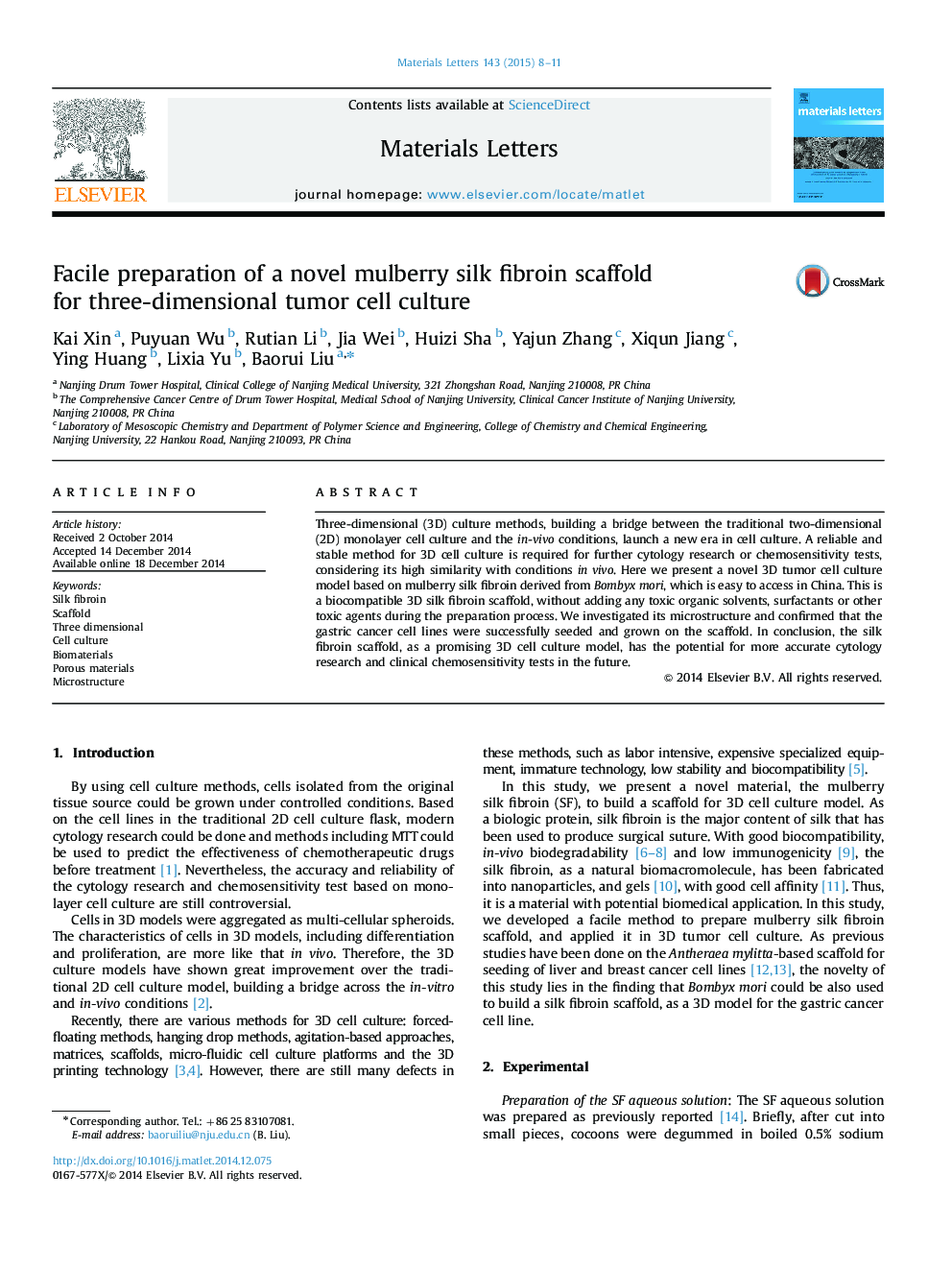| Article ID | Journal | Published Year | Pages | File Type |
|---|---|---|---|---|
| 1642732 | Materials Letters | 2015 | 4 Pages |
•Silk fibroin derived from B. mori is available for building biological 3D scaffold.•The preparation method of silk fibroin scaffold is facile and non-toxic.•The silk fibroin scaffold with porous microstructure is proved to be stable.•The gastric cancer cell line MKN45 grows and aggregates within the scaffold.
Three-dimensional (3D) culture methods, building a bridge between the traditional two-dimensional (2D) monolayer cell culture and the in-vivo conditions, launch a new era in cell culture. A reliable and stable method for 3D cell culture is required for further cytology research or chemosensitivity tests, considering its high similarity with conditions in vivo. Here we present a novel 3D tumor cell culture model based on mulberry silk fibroin derived from Bombyx mori, which is easy to access in China. This is a biocompatible 3D silk fibroin scaffold, without adding any toxic organic solvents, surfactants or other toxic agents during the preparation process. We investigated its microstructure and confirmed that the gastric cancer cell lines were successfully seeded and grown on the scaffold. In conclusion, the silk fibroin scaffold, as a promising 3D cell culture model, has the potential for more accurate cytology research and clinical chemosensitivity tests in the future.
